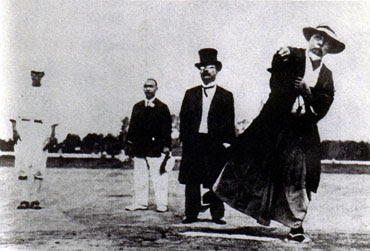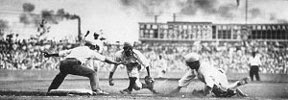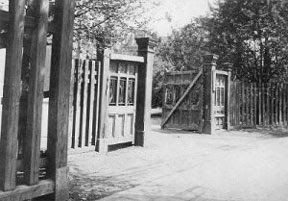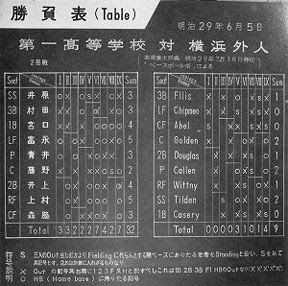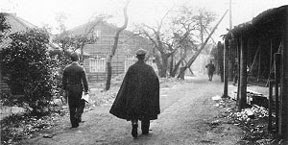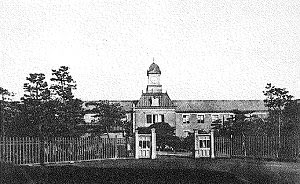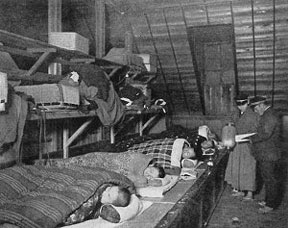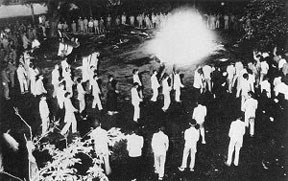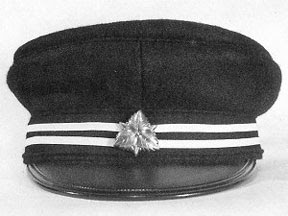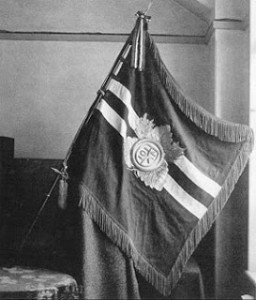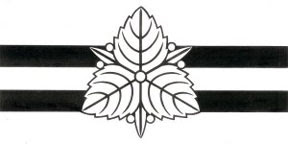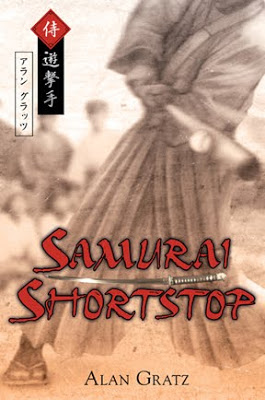Learn More About Ichiko and Japanese Baseball
Some of the things that happen in Samurai Shortstop are based on actual events. While almost all the characters are fictional, Ichiko, the First Higher School of Tokyo, was a real place. Read on to learn more about this fascinating time and place in Japanese history…
The Meiji Restoration
When American Commodore Matthew Perry sailed his steam-driven “Black Fleet” into Yokohama harbor in 1853, life in Japan was turned upside down. The ruling Shogunate, which had managed to keep almost everyone from the west out of Japan for nearly three hundred years, was forced to open the country to Western ideas and culture. In the turmoil that followed, a group of powerful samurai overthrew the Shogun and put Emperor Meiji in power.
Meiji realized three centuries of isolation had left Japan far behind its Western neighbors in scientific advancement, and he and his advisors hurried to catch the nation up to speed. Almost overnight, Japan went from the middle ages to the modern era. Streetcars and locomotives were a radical shock to a nation that still walked and rode horses. Inventions and advancements that were discovered slowly in the West appeared all at once in Japan-telephones, electric light bulbs, skyscrapers, gas heating, plumbing, movie theaters, even baseball, were all imported at the same time.
Baseball in Japan
Still a relatively new sport in America, baseball was introduced into Japan in the 1870s by a young American named Horace Wilson, who taught history and English at a Tokyo school. The sport quickly caught on, and Ichiko, the First Higher School of Tokyo, soon became one of the new sport’s powerhouses. While baseball programs like Ichiko’s were later to have professional coaches, many were originally organized and run by the students themselves, like Toyo’s team.
Throughout my story, I incorporated fictionalized versions of several real-life incidents that happened in Japan during the 1890’s. In 1891, in front of thousands of baseball-mad fans, an American did in fact climb over the sacred Wall of the Soul at Ichiko. He too was attacked by Ichiko students, and the incident really did damage Japanese-American relations at the time. No goodwill baseball game was actually played, but after several rounds of official apology, the matter was settled.
Though my gaijin Shimbashi Athletic Club is fictional, the Ichiko nine did play a team of American workers from Yokohama in 1896, and that First Higher team also won by the incredible score of 29-4. It was a huge moment for a nation struggling to prove they could play on equal terms with the other nations of the world, and the victory was written about in newspapers from one end of Japan to the other.
The Ichiko team went on to defeat the Americans twice more, by the equally ridiculous scores of 32-9 and 22-6. Ichiko was only defeated when the Americans recruited a professional baseball player from a U.S. Navy ship stationed in Yokohama harbor. Even then, the final score was 14-12.
Today, baseball is by far Japan’s favorite sport. The annual National High School Baseball Summer Tournament, begun in 1915 by the Asahi Shimbun, is one of the world’s largest amateur sporting events. Dozens of teams from across Japan play a single-elimination tournament in front of almost one million fans, and many millions more stay home from work to watch the televised games. The competition is fierce, but boys who persevere and win are regarded as national heroes, and often go on to play baseball in Japan’s major leagues.
Ichiko high school closed its doors on March 24, 1950 during an overhaul of the Japanese educational system. The campus is now used by Tokyo University.
